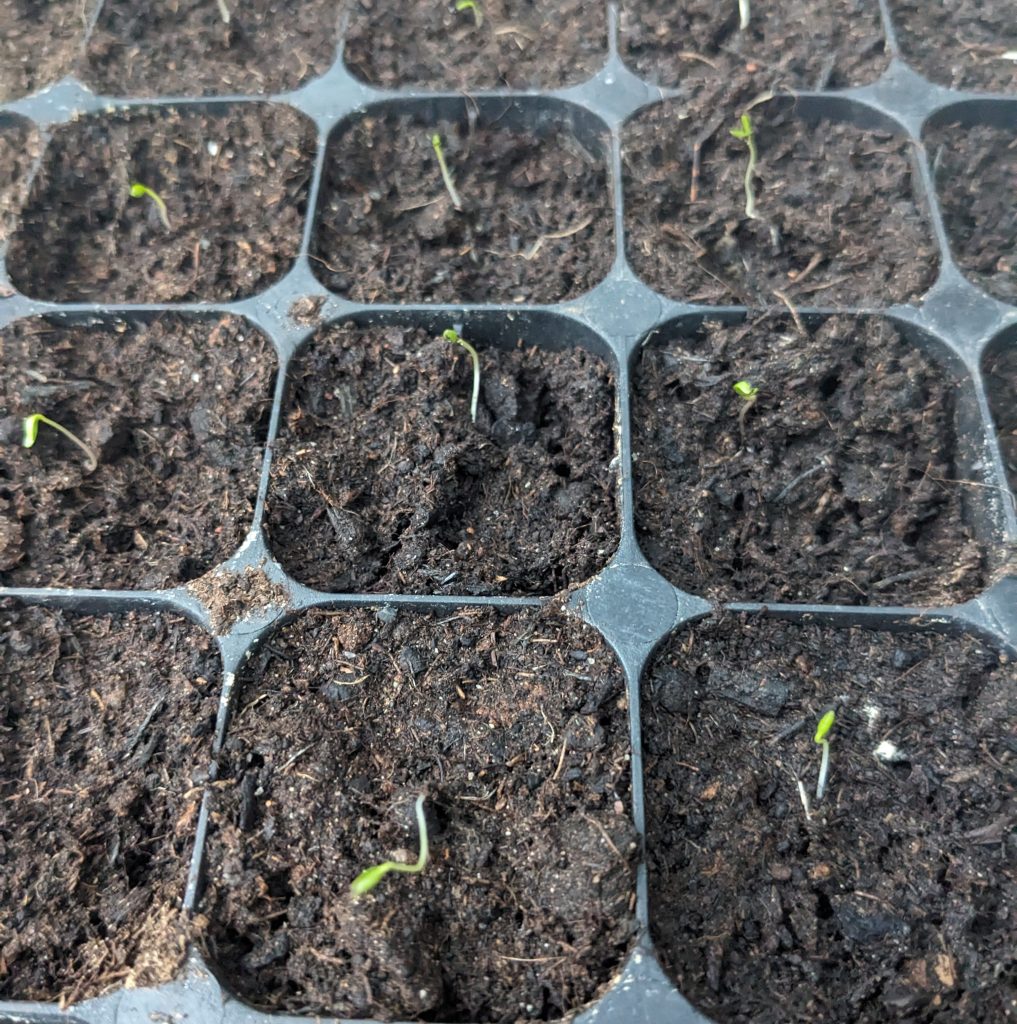If at first you don’t succeed, try and try again! This plant, Caucasian spinach (Hablitzia tamnoides) caught my eye as one that is worth adding to a food forest. Like many others, it has “leaves that can be used as spinach”. The two properties that make it more attractive to me are that it grows well in shade and it is a climbing, vine like plant. My garden, like many suburban gardens has a lot of walls which are in shade much of the day, so this plant fits the bill for these microclimates. I believe it originates in Scandanavia and can cope with frosts and snow. It has edible shoots emerging in early spring. It is reported to live for up to 50 years, so worth the effort to hunt down and plant it.
So last year I searched my usual sources for ready grown plants, but they were all out of stock. I found some seeds for sale and planted them in seed modules and I put them in our utility area. I kept the soil moist, but this combination of moisture and light resulted in the growth of moss and a bit later, weeds. After leaving the module tray in a shady spot outside for a few months, I gave up on it.
Success at last
I failed to find any caucasian spinach for sale again this year. But motivated by seeing it growing happily in an aquaintance’s permaculture garden, I decided to try again. I have been volunteering at FarmEco, where some of us are helping start up a community tree nursery. One of the ways we are starting off tree seeds is by mixing them with a handful of compost and leaving them outside in jiffy bags through the winter. I decided I would try starting off half of my seeds like this and see what happens.
In November, I made up one bag with caucasian spinach and a second with meadowsweet and left them outside in my mini greenhouse. Yesterday I checked the bags. To my delight, the caucasian spinach had already sprouted and there were a hundred or so seedlings leaning towards the light. I carefully openned the bag, untangled roots and planted up a selection in my module trays.
Now I face the challenge of keeping them alive and growing on. If they do well, I will have enough for my garden, the churchyard, for friends and family and more to sell. Each little step to increasing the amount of food growing locally and freely within our local community makes my heart sing! We live in a culture where we are encouraged to expect instant results for minimal effort. Don’t let that put you off from trying to grow plants that are more challenging.

